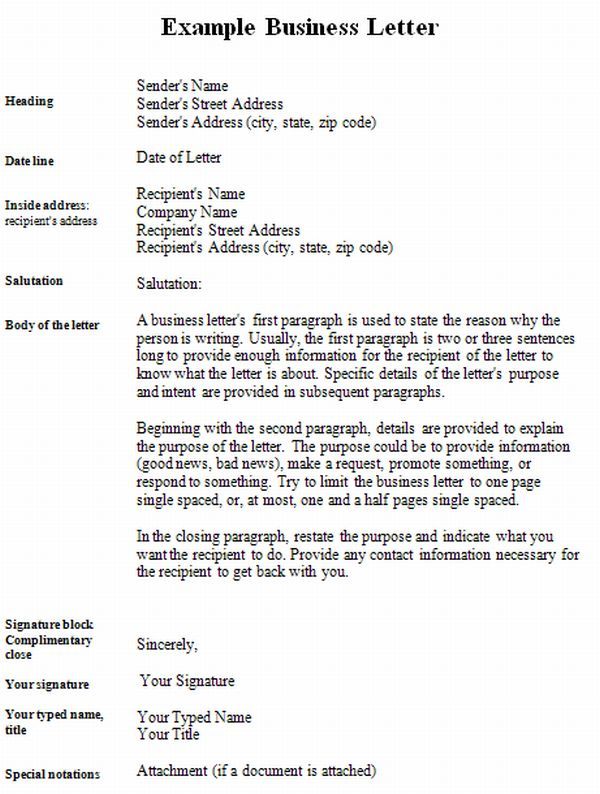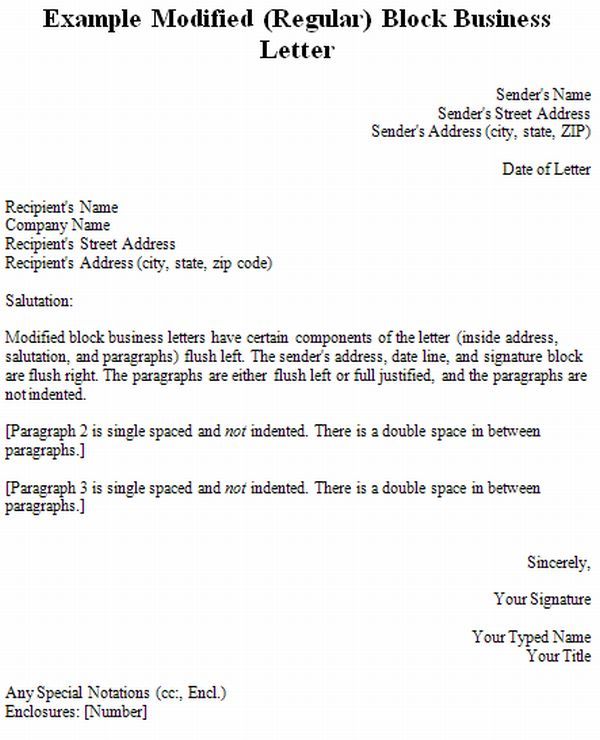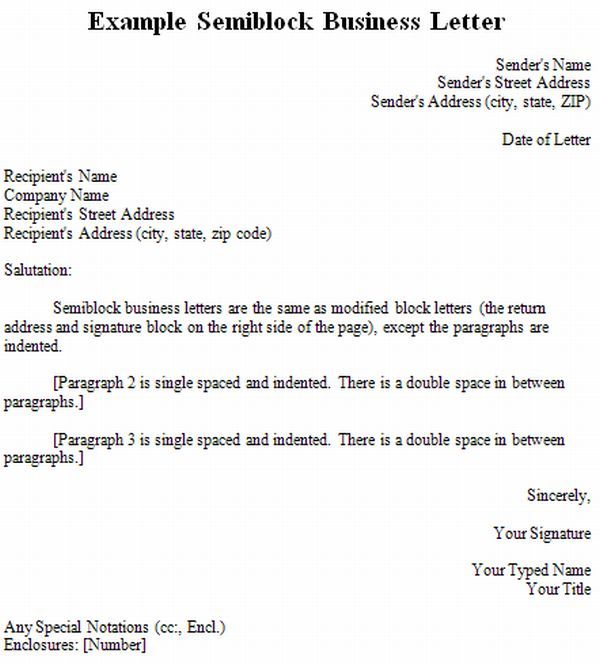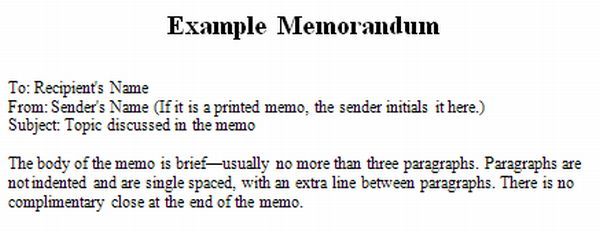Being able to communicate effectively in the business world is as crucial now as ever. A University of Pittsburgh Katz Business School study of recruiters employed in large companies found that written and oral communication skills and the ability to work with others are the main factors contributing to job success (Manktelow 2003). NASA also is placing high importance on "soft skills" like communication skills. According to a February 2008 article in USA Today (Watson 2008), NASA wants space shuttle astronauts not only to be able to perform as scientists on shuttle missions, but also to have interpersonal communication skills to help them get along for long periods in a cramped shuttle or space station environment.
This publication about business writing is the first of a four-part series about developing effective business communication practices. This series also covers proper telephone communication techniques and resume, application letter, and personal statement writing.

Credit: UF/IFAS
Business Writing
Even with email and cell phones, business letters are still the backbone of communication between people (e.g., between sales representatives and customers). A business letter is a formal document typically sent to people outside of an organization. Business letters provide recipients with specific information, such as a notification of an award or a note of appreciation for a donation. Business letters also can be used to persuade recipients to take some type of action, such as making a donation.
Business letters may seem challenging to write because you must consider how best to keep the recipient's attention. The following fishing analogy may be helpful.
- Bait: Let the reader know immediately what the letter is about at the beginning. The letter may be to inform the reader of an award, to thank the reader, or to ask the reader for something. Do not wait until the last sentence to tell the reader what the letter is about.
- Hook: Let the reader know how what you are asking for benefits the reader or the reader's organization. This should take from one to three paragraphs.
- Reel it in and land the catch: The letter should have some "call to action"—a statement of what you want or need. The closing of a business letter often specifies or suggests what the next action in the particular situation should be. When appropriate, this closing should say what you—as the sender of the letter—will do next or what you hope the recipient will do next.
In order to "catch" the reader, consider these steps in writing a business letter:
- Know your reader. Focus on how the content of the letter benefits the reader. Appeal to the reader. Write in a friendly and helpful tone.
- Know your purpose. What do you want the reader to do with the information that is presented? When trying to convince someone to act or react in a positive way, make your meaning crystal clear so the reader will respond quickly.
- Write clearly. Tips on how to write clearly are provided in the next section.
- Write a draft of the business letter. Try to make sure that these questions are answered in the draft:
- Is the purpose clear?
- Is the information organized in the most effective sequence?
- Does each section follow logically from the one that precedes it?
- Are all the facts, details, and examples relevant to the stated purpose?
- Is the draft written at the appropriate reading comprehension level for the reader?
- Revise the draft of the business letter. In the revision stage, try these techniques:
- Wait a few hours between writing a rough draft and revising it so as to view the writing more objectively.
- Revise the draft in multiple passes. Do not try to improve everything all at once. Focus first on writing a clear message. Save mechanical corrections, like spelling, grammar, and punctuation, for later proofreading.
- Be aware of typical errors and watch for them during the revision process.
- Read the draft letter out loud. Listening to sentences out loud often helps with identifying problems in your writing.
- Ask someone else to read and critique the draft letter.
Writing Clearly
One of the most important aspects of a business letter is clear writing. Clarity is achieved if each part of the letter advances the letter's purpose and if the ideas in the letter are connected. Below are some tips for writing a clear business letter.
- Tone: The tone for all business letters, even complaint letters, should be polite and positive. Beware of using an angry or negative tone.
- Graphic design: To help communicate your purpose, use simple graphic design elements, such as bulleted lists, graphs, or small pictures as appropriate.
- Length: Keep sentences and paragraphs "bite sized." Use short paragraphs of three to five sentences, short sentences of 20 to 25 words, and short letters of no more than two pages in length when writing business letters. Limit the letter to one page, if possible. The maximum length should be one and a half pages.
- Precise words: Use precise words that explain exactly what you mean. Avoid imprecise words, such as "strong," "heavy," "fast," and "weak." Instead of "heavy," say "95 lbs." Instead of "fast," use "85 mph."
- Recipient's name: Use the name of the person to whom the letter is to go. If at all possible, do not send a letter to "To Whom It May Concern." Be sure to spell the name correctly. Getting the recipient's name right on a job application letter is especially important.
- Word processing: The word processing software program on your computer is an asset, so use the program creatively, but do so wisely. Do not overdo underlining, boldfacing, italicizing, or bulleted lists.
- Grammar, punctuation, and spelling: Writing mechanics (grammar, punctuation, and spelling) need to be as close to perfect as possible to ensure that your message is clear. Read and reread your business letter for mechanical errors.
Components of a Business Letter
Writing a business letter is not a difficult process. Business letters have similar components. Once you master the components of a business letter, you can use them for any type of letter.
- Letterhead: Use the printed letterhead from your organization, if at all possible. The letterhead should contain the organization's address, telephone number, fax number, Web address, and email address.
- Heading: Includes the date and the sender's address. The sender's address is included only if the letter is not written on an organization's letterhead.
- Date line: The date is typed two lines below either the letterhead or the heading.
- Inside address: This includes the name of the person who is receiving the letter, the person's title, organization name, and full address (street, city, state, and zip code).
- Salutation: The formal greeting appears two lines below the inside address. Use courtesy titles in the salutation, such as "Dr.," "Mr.," "Mrs.," "Ms.," or "Reverend." For women, only use "Mrs." if you are absolutely certain that the recipient uses "Mrs." as her courtesy title. If uncertain, use "Ms." Also, be sure of the recipient's gender. Some names are gender neutral, such as Casey, Taylor, Chris, Tracy, or Ashley. Salutations in formal letters end with a colon ("Dear Mr. Smith:"). Salutations in informal letters sent to friends should include the recipient's first name and end with a comma ("Dear Ted,").
- Body of the letter: The paragraphs in the letter are single spaced, with double spaces between paragraphs. Paragraphs in letters are rarely more than six or seven lines long, which means three to five sentences in length.
- Signature block: Includes a complimentary close, your signed name, and your typed name.
- Complimentary close: This is placed two lines below the last line of the body. Examples of a complimentary close are "Sincerely," "Sincerely yours," and "Yours truly." When the close contains two words, only the first is capitalized. The complimentary close is followed by a comma.
- Your typed name appears four lines below the complimentary close.
- Your signed name appears between the complimentary close and your typed name.
- Special notations: These are placed two lines below your typed name. Common special notations are as follows:
- cc: Followed by a person's name: This means that a copy of the letter is being sent to the person named.
- Enclosure or encl.: A separate document or item mentioned in the letter is enclosed in the same envelope as the business letter.
- Attachment or att.: A document has been attached to the letter.
- P.S.: This is a notation meaning postscript and is usually handwritten and added at the very end of all other notations.
An example business letter that identifies all the components of a typical business letter can be found at the end of this publication.
Business Letter Formats
Business letters can be written in one of three formats: full block, modified block (also called a regular block letter), and semiblock. It does not matter which format you use. Just find one you like.
A full block letter has all of the components of the letter (heading, date line, inside address, salutation, paragraphs, and the signature block) flush left, meaning that the components are all the way to the left side of the page. The paragraphs are either flush left or full justified, and they are not indented. A modified block letter is similar to the full block, in that the sender's address, salutation, and paragraphs are flush left, with the paragraphs not indented; however, the date line, return address, and signature block are moved to the right. A semiblock letter has the return address and signature block on the right side of the page, and the paragraphs are indented.
Examples of a full block letter, a modified (regular) block letter, and a semiblock letter can be found at the end of this publication.
Types of Business Letters
Business letters not only come in different formats (full block, modified block, and semiblock), they also come in different types. The most common ones are information letters, request or solicitation letters, promotion letters, cover letters, and response letters.
Information letters are written to inform someone about something, such as an approaching event, a decision, an award, or an action. Good news and bad news letters and complaint letters are examples of information letters. Request letters make a request, such as for a financial contribution or a pledge of support. Promotion letters are written to promote a cause or event to encourage the recipient's acceptance and participation. Cover letters accompany a longer document and explain why the reader might be interested in reading the document. An application letter with a resume is a form of cover letter. A response letter thanks people for doing something positive, such as providing financial support for an organization. The thank you letter is the most common form of response letter.
The following are tips on how to write some of the most common letters: good news letters, bad news letters, request letters, thank you letters, and complaint letters.
Good News Letter
The good news letter generally conveys information that will please the reader. When writing a good news letter, deliver the good news immediately. If you open with "Congratulations," be sure to immediately inform the recipient about the honor or award. Do not include specific details about the good news in the first paragraph. The function of the first paragraph is to announce the good news.
In the next paragraph, explain the details of the good news. For example, if the reader is to receive a cash prize, let the reader know when to expect it. This section can include more than one paragraph if more detail is needed. In the last paragraph, end positively, perhaps with instructions about how the recipient can contact you.
Bad News Letter
The bad news letter tells the reader something that the reader does not want to hear. Examples of bad news letters include informing the reader that he or she will not receive a refund, that he or she is not a candidate for a job or internship, or that a donation request has been denied. One of the main objectives of a bad news letter is to preserve a good relationship with the reader while delivering bad news. In the opening paragraph, begin courteously, focusing on the positive relationship that you have had with the reader. If appropriate, thank the recipient for contacting you. Discuss the positive aspects of the relationship between your organization and the recipient. Do not mention the bad news in the first paragraph.
In the second paragraph, explain the reason for the bad news. This can be more than one sentence. Provide a concise description of the reason for the bad news before you deliver it to aid reader understanding. For example, if the reader applied for a job, explain in the second paragraph that no job openings were available. Usually in the same paragraph as the reason for the bad news, in one sentence, state the bad news clearly and concisely. Do not let the bad news close the paragraph. End the paragraph with something positive or at least neutral. For example, you can write that you will keep the reader's resume on file. In the last paragraph, do not refer to the bad news. Focus on a good relationship between your organization and the reader.
Request Letters
A request letter is used to ask someone outside your organization for something that you need, such as information, special consideration, funds, or donations. Most nonprofit organizations write request letters. In the first paragraph, make the request and briefly identify yourself or the organization. It is always best to get right to the point. Do not wait until the last paragraph to make the request.
In a new paragraph, explain and justify the request by providing additional information. In the same paragraph or possibly a third paragraph, detail precisely what you hope the reader will supply. Do you need a specific financial contribution? Do you want specific items for a silent auction? Does the request need to be completed by a certain date? Also in this paragraph, explain the benefit to the reader of fulfilling your request. For example, for a donation to your organization, the reader may receive recognition by being included in a printed program, having the reader's name printed on a T-shirt, or showing the reader's name on a slideshow. In the final paragraph, close courteously by saying what action you will take or what action you hope the reader will now take. For example, do you want the reader to contact you? Will you contact the reader? Will you provide a form for the reader to complete?
Thank You Letters
Your mother probably told you to say "please" and "thank you." Those manners are still important in the business world, especially when someone or a company does something nice for you. Thank you letters should be written any time services (such as someone guest speaking for your organization), donated products (food or printed materials), or monetary gifts are provided to your organization. Doing so establishes or maintains good relations between your organization and the company that donated the services or gifts. Thank the person or company specifically, and then thank them for their support.
In the thank you letter, begin by greeting the reader. Express your gratitude for the service or donation the reader provided. Discuss how the gift was used. If the gift was a cash donation, mention how you will use the money, but do not itemize your planned purchases. If appropriate, mention how past actions or support have helped your organization, and then lay the framework for future support. (e.g., "We thank you for your past contributions and hope you can continue your support as our organization grows.") At the end, express your gratitude again; it is not overkill to say "thanks" one more time. Wrap up the letter with your name and a complimentary close.
Thank you letters can be in the form of a typed letter, handwritten note, or email, but which one do you send? A typed letter is the most formal and is always appropriate after any donation or service provided. Handwritten notes are more personal and can be appropriate for brief notes. However, handwritten thank you notes are only as good as your handwriting, so make sure your handwriting is readable. Email is appropriate if you want to send a quick thank you to be followed up by a typed letter. Email is not generally seen as an appropriate form for a thank you unless the person has expressed a preference for email.
Complaint Letters
Complaint letters express dissatisfaction about a service or item that the reader provided. In the first paragraph, courteously explain the reason why you are writing the letter. Explain what is wrong with the product or service and include enough details so the reader can check the information.
In the second paragraph, state the inconvenience or loss that has resulted from the poor product or service. In this paragraph, also try to motivate the reader to some action by appealing to the reader's professionalism, sense of fairness, and honesty. In the final paragraph, end with some call to action. What do you want the reader to do? For example, do you want your money back?
Understand that no complaint is trivial. Each complaint deserves prompt handling. When writing the letter, everything should be factual, courteous, and fair. Always avoid argument and criticism.
In the same way, you may need to write response letters to complaints lodged against you. When responding to complaints, avoid arguing. If you cannot meet the person's demands specifically, then say that. For example, the person may request a cash refund. If your policy prohibits cash refunds, let the person know that. But if coupons, gift certificates, or another form of restitution can be provided instead of a cash refund, let the reader know that, and then provide the coupon or gift certificate. Always treat the complaint seriously and do not criticize the person making the complaint.
Memos
The word memo is short for memorandum, a written reminder of something important that has occurred or will occur. Memos are generally used to communicate information quickly and efficiently within an organization. Usually they are not used to communicate with people outside the organization. Memos ordinarily are addressed to one person or a small group of people.
A memo should be concise and focused. The reader should be able to understand easily what the message is and what the reader is supposed to do in response to what is being communicated. Memos solve problems either by providing the reader with new information, like a company's policy changes or price increases, or by persuading the reader to take an action, such as to attend a meeting or use less paper. However, most memos communicate basic information, such as meeting times or due dates for a project.
Memos follow a fairly standard format. They have lines for "date," "to," "from," and "subject." Because a memo is a document for internal communication, a salutation and signature block are not needed. The sender signs his or her initials next to the sender's name on the "from" line. The memo is shorter than a formal letter and usually provides more visual cues, such as bulleted or numerical lists. Paragraphs are not indented and are single spaced, with an extra space between paragraphs. Sometimes memos are sent over email as an "e-memo" to members of an organization.
An example of a memorandum (or memo) can be found at the end of this publication.
Email, Text Messaging, and Instant Messaging
Because today's youth and young adults have had electronic mail (email), text messaging (texting), and instant messaging for most of their lives, they are used to the shorthand that accompanies it (e.g., LOL ["laugh out loud"], IMHO ["in my humble opinion"]) . However, to be successful in the business world, you must be able to write professional emails. Properly written emails can be a person's first impression of you, so you want to make a good first impression.
For email, texting, and instant messaging, the ease of sending messages immediately with a computer mouse click or a cell phone can create difficulties. You can fire off messages without considering their content. Because facial expressions and body language cannot be relied upon to help explain electronic messages, their meanings can be mistaken. Words on a screen can have a common meaning, but vocal inflection can give them an entirely different meaning. When you develop email, texts, or instant messages, consider exactly what you want the receiver to think, know, or do. Imagine how that person is likely to respond to the message.
Below are some tips to help you get the result you desire.
- Starting off. Let the reader know right away what the message is about so they can begin to follow your thought process. To do this, use a meaningful subject line. Do not leave the subject line blank. Many professionals prioritize which emails they read based on the content of the subject line. Begin with an appropriate greeting, such as one that you might use in a conversation or on the phone.
- Keep it short. Keep messages short, usually one to no more than two screens of information. If you have a long report, send it as an attached file.
- How to send it. Do not overuse the "high priority" or "important" option when you send an email. Not all of your emails can be high priority. For emails to many recipients, use the BCC (blind carbon copy) line on the email. Any email address placed on the BCC line will not be seen by the other recipients, which prevents the problem of scrolling through many lines of email addresses on a received email.
- Tone. For most emails, you should use a conversational tone because email is a more spontaneous type of communication. For emails written to professionals and people of authority, however, you must use proper grammar, punctuation, and spelling because your email may be the recipient's first impression of you. Also, do not use instant message shorthand in a professional email. In all cases, make your email easy to read by using simple words and short paragraphs and sentences.
- Ending it. Let readers know what you expect from them. If you want people to email you back, put that request in the email.
Netiquette
You should incorporate good "netiquette" techniques in your emails. Etiquette is the proper way of conduct in a given setting. Netiquette, or "Internet etiquette," is the set of common rules that govern how to send and receive email properly. Companies regularly bring in expensive consultants to teach their employees the proper way to communicate via email. Below are some netiquette tips.
- Be polite.
- Answer your email promptly, especially if the e-mail is a request for information.
- Keep your messages short.
- Edit and proofread carefully. If your relationship with the reader is solely professional, apply strict standards to your grammar, spelling, and punctuation.
- Avoid long paragraphs. Break up email paragraphs so that you do not have more than two to three sentences in a paragraph. It is much easier to read shorter blocks of text on a computer screen than longer ones.
- Keep the signature block (at the bottom of the message) short. When sending business emails, the signature block should contain just the essentials: your name, title, phone number, email, and mailing address. It is best not to include your favorite song lyrics or quote of the day.
- Use a professional-sounding e-mail address. When sending emails to a business or professionals, avoid "cutesy" or inappropriate-sounding email addresses, such as "icowgirl87," "hottie4you," or "imthegreatest." You can never go wrong by using your name as your email address.
- Avoid derogatory comments, such as offensive, racist, or obscene remarks. Anything sent by a computer can be traced to its source.
- Use emoticons ("smileys") to convey a little personality, but be careful about their use in business emails. Overuse of emoticons and text and instant messaging shorthand may not be appropriate in business situations.
- Do not type in all capital letters. It is considered SHOUTING! Use uppercase and lowercase lettering. It is also much easier to read.
- Do not use e-mail to discuss confidential information. Confidential information should never be sent in an email.
- Do not attach unnecessary files. Only attach what the person receiving the email needs.
Instant Messaging and Text Messaging
Instant messaging and texting are becoming more common in the business world as ways to bridge the gap between telephone calls and email messages. They are instantaneous ways to communicate in businesses. Choose a screen name that will not offend anyone. Keep messages simple and to the point, covering only one subject in each message. Abbreviations and shortened spellings are appropriate for texting in business uses.
Conclusion
Learning how to write letters (thank you, request, good news, bad news, and others), emails, texts, and memos, is a valuable skill and will better prepare you to meet the communication challenges of the business world.
References
Manktelow, J. (2003). Why you need to get your message across. http://www.mindtools.com/CommSkll/CommunicationIntro.htm
Watson, T. (2008). For NASA, "the right stuff" takes on a softer tone. USA Today, pp. 1A–2A. https://abcnews.go.com/Technology/story?id=4236629&page=1
Additional Information
Harpold, L. (2003). How to write a thank you note. https://themorningnews.org/how-to-write-a-thank-you-note/
Marsh, C., Guth, D. W., & Short, B. P. (2005). Strategic writing: Multimedia writing for public relations, advertising, sales and marketing, and business communication. Boston: Pearson Education.
Newsom, D., & Haynes, J. (2013). Public relations writing: Form and style (10th ed.). Belmont, CA: Wadsworth.
Oliu, W. E., Brusaw, C. T., & Alred, G. J. (2020). Writing that works: Communicating effectively on the job (13th ed.). Boston, MA: Bedford/St. Martin's.
Pearsall, T. E. (2009). The elements of technical writing (3rd ed.). Needham Heights, MA: Allyn & Bacon.
Trawick, L. (2007). Sample letter. https://owl.english.purdue.edu/owl/resource/653/2/




